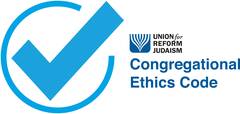Svihov Torah at CA
Švihov Torah
at Congregation Albert

In November 1996, Congregation Albert was entrusted with the keeping of a Torah scroll originally in the possession of the Jewish community of Švihov, a town in Bohemia in Eastern Europe. The scroll was seized by the Nazis after the town’s residents had been deported, many to the Terezín concentration camp. After the war, the scroll passed into the possession of the state of Czechoslovakia, along with over 1800 other torah scrolls seized by the Nazis from Jewish communities in Bohemia and Moravia. In 1964, the Czech government sold 1564 of these scrolls to the Westminster Synagogue in London, which established the Memorial Scrolls Trust (MST), an organization that loans these scrolls to Jewish communities around the world for safekeeping until the Jewish communities of Bohemia and Moravia may once again be able to reassemble. This Švihov Torah scroll bears MST #1337.

The Švihov Torah Scroll today.
We offer every B’nai Mitzvah celebrant the opportunity to physically pass the scroll down through the generations of their family during their Bar or Bat Mitvah service. This physical passing of the Torah shows our respect for its heritage and our determination to make it a living part of our ritual. In addition, we read Kedoshim (Leviticus 19), from the scroll twice a year, once on Yom Kippur afternoon and once in late April or early May. This parashah tells of the laws of holiness and ethical behavior, repeats the Ten Commandments, and describes penalties for sexual transgressions.
When Congregation Albert first received the scroll in 1996, we read from it on a regular basis. Over time, however, we noticed that the scroll was deteriorating. In 2017, we asked Sofer Neil H. Yarman to advise us on the conservation of the torah. He noted that the scroll is written in the K’tav, or Classic Czech, style and determined that most of the writing dates from 300-340 years ago, while the Book of Deuteronomy is around 220-230 years old. The parchment was very thin and fragile, with several sizable holes. Every time the scroll was rolled or unrolled, there was constant flaking of the ink, so we now open it only to Kedoshim, which Yarman determined to be in “good shape.”
Family Reunion

On December 8, 2024, Congregation Albert hosted a “Family Reunion” of the three MST Scrolls in New Mexico, including scroll #666 in the care of the New Mexico Holocaust and Intolerance Museum in Albuquerque, and scroll #426 on loan to Temple Beth Shalom in Santa Fe. We reproduce above a photo taken of the scrolls displayed together in our sanctuary. A link to remarks given on this occasion by Ms. Camelia Caton-García, Director of Collections at the New Mexico Holocaust and Intolerance Museum, can be found below.
The Jewish Community of Švihov
The Jewish presence in Švihov can be dated reliably to 1570. A permanent prayer room was established in the second half of the seventeenth century. After the first synagogue burned down in 1773, a new building in the rococo style was erected in 1783. The Švihov synagogue served as a place of worship for Jews from eight surrounding towns. The community had a Jewish street and a butcher. By the twentieth century, the congregation had acquired five torah scrolls. While there had been 79 Jews living in Švihov in 1890, by 1930 only 20 Jews were living there, with many having moved elsewhere – mostly to larger cities. In 1942, the remaining Jews of Švihov were deported by the Nazis. Most perished at Terezín. More information on the history of the Jewish community of Švihov is available on the web site of the Jewish Museum of Prague. There are no Jews resident today in Švihov, although in 2022 the Federation of Jewish Communities in the Czech Republic estimated that there were between 3,000 and 5,000 Jews in the Czech Republic, of whom 600 were living in Prague.
The Memorial Scrolls Trust
The Memorial Scrolls Trust (MST) is an independent charity that was formed by the Westminster Synagogue to care for the Torahs and other Scrolls from Bohemia and Moravia that survived the Shoah in Prague and were brought to London in 1964. These Scrolls, from communities so tragically destroyed by the Nazis, are now dynamic messengers given a second life, many for ritual use, others for education and interfaith work. Some 1,400 Scrolls have been allocated on loan to synagogues and institutions around the world. Another scroll from Švihov is currently on loan to Shir Shalom, a Reform congregation located in Woodstock, Vermont.

The Švihov Torah, opened to Parashah Kedoshim (Leviticus 19).
Important Links
● “Family Reunion” remarks by Camelia Caton-García, Director of Collections at the New Mexico Holocaust and Intolerance Museum at Congregation Albert, December 8, 2024
● Program for the Dedication of the Švihov Torah at Congregation Albert, November 8, 1996
● Švihov Torah Dedication at Shir Shalom in Woodstock, Vermont, September 28, 2019
Sat, April 12 2025
14 Nisan 5785

Our ECC students' home-made matzah!









